Hyperborea – a mythical civilisation of the Ancient Greeks. Located somewhere north of the North Wind, beyond the mountains in a land of perennial daylight, where everyone lived a thousand years in complete happiness. Homer placed it north of Thrace. Pindar, near the Danube. Herodotus thought that it was in Central Asia, on the far side of the mountains that mask China from Kazakhstan. Others put it beyond the Alps. Or north of Scythia, in the then unknown land north and east of the Black Sea.
As the terra incognita faded from the borders of maps so did the mythical Hyperborea. But it left its traces in the real world. In the scientific name of Habenaria hyperborea, a leafy green orchid with small, pale-green flowers native to wintry wetlands. And Festuca hyperborea, a tufty sedge that occurs on cliff tops, slopes, ridges, and river terraces. An artic bird bears its name, as does a ground-dwelling spider and almost 200 other species of plants, animals, and fungi, all natives of this no-place.
Oliver Hull’s delicate watercolour illustrations depict some of these species. Like a medieval herbal encyclopedia, they show the plants and fungi soberly, clearly, with fine detail. They recall the Voynich manuscript, one of the most famous and mysterious of these herbals, but as sort of reversal. That work depicted imaginary or mythical species, whereas here the species are real, but refer to a fantastical place. Hull’s drawings introduce the mythical in the form of the ordinary, bringing the myth at the edges of the everyday world into the forefront. Pewter coins, cast by the artist in cuttlefish, accompany the drawings. Reproducing coinage from the possible locations of Hyperborea, they connect the plants to its speculative geography, giving it historical life.
The work repudiates a recurring idea that there is an opposition between myth and reality. That myth is a sort of distracting or antiquated fancy, a disturbance of the real to be cleaned away, disregarded, or debunked. Here it shown that such ideas can manifest themselves tangibly in the real physical world. The ancient Hyperborea pervaded reality, leaving rich and remote myth embedded in the everyday. In Hull’s work these fragile eccentricities and coincidences of the path of history can bring us into contact with the otherwise unreachable.
- Guy Louden
catalogue for An Audio Guide through the Hyperborean Weeds and Termite Mounds of Mars, Freerange. ,Perth WA
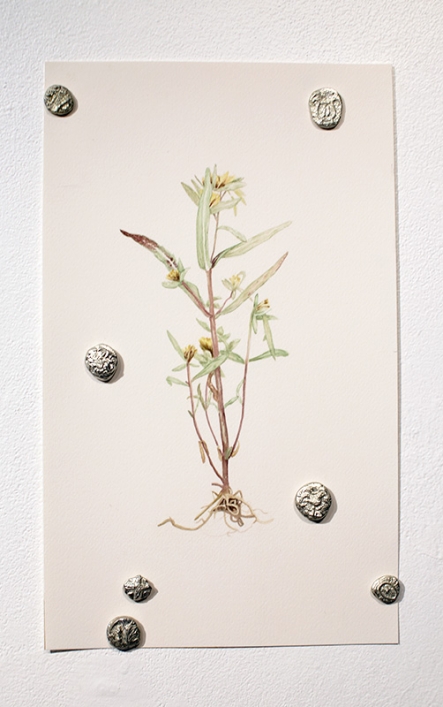
Watercolour on paper, pewter coins, rare earth magnets.
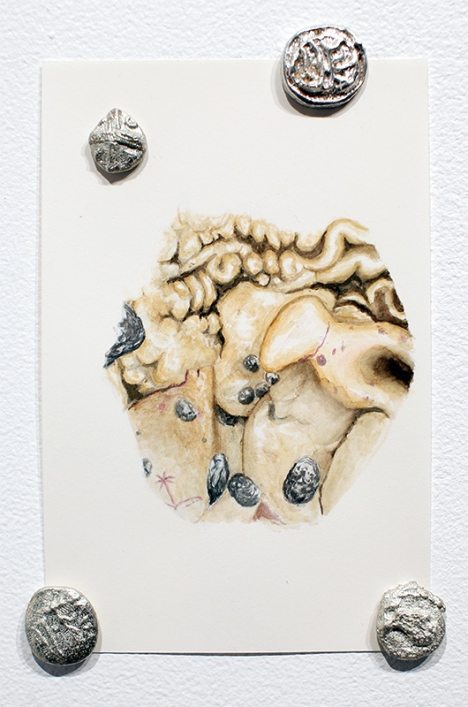
Watercolour on paper, pewter coins, rare earth magnets.
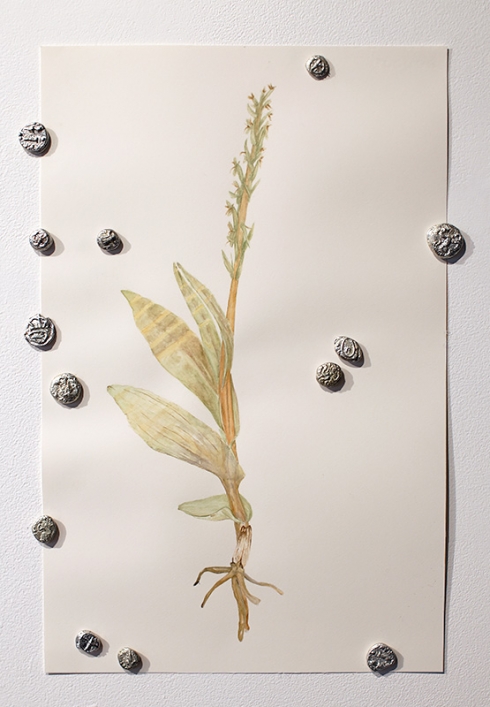
Watercolour on paper, pewter coins, rare earth magnets.
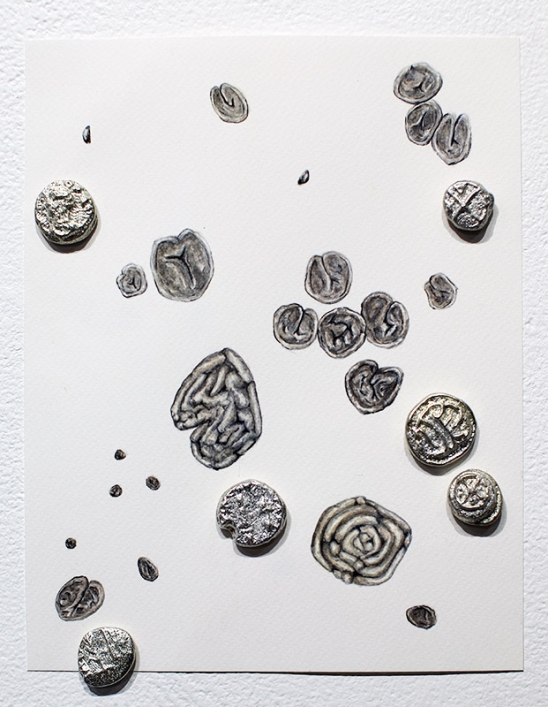
Watercolour on paper, pewter coins, rare earth magnets.
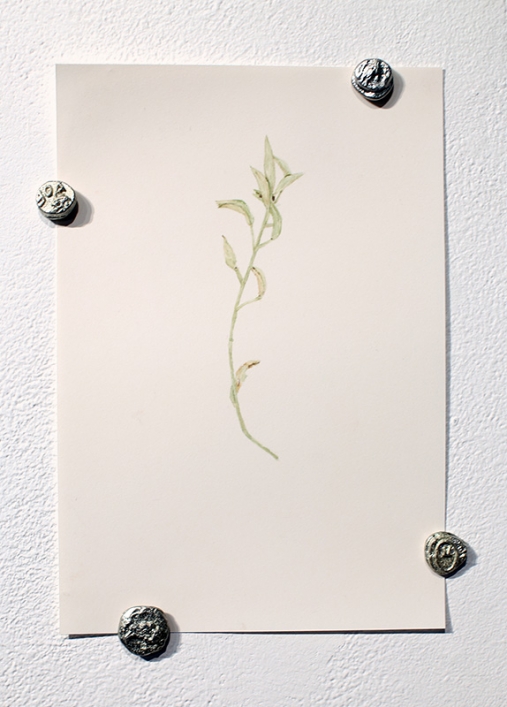
Watercolour on paper, pewter coins, rare earth magnets.
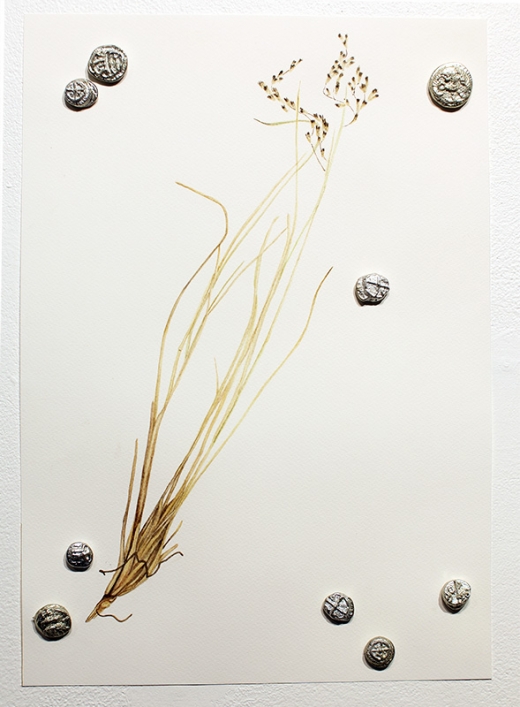
Watercolour on paper, pewter coins, rare earth magnets.